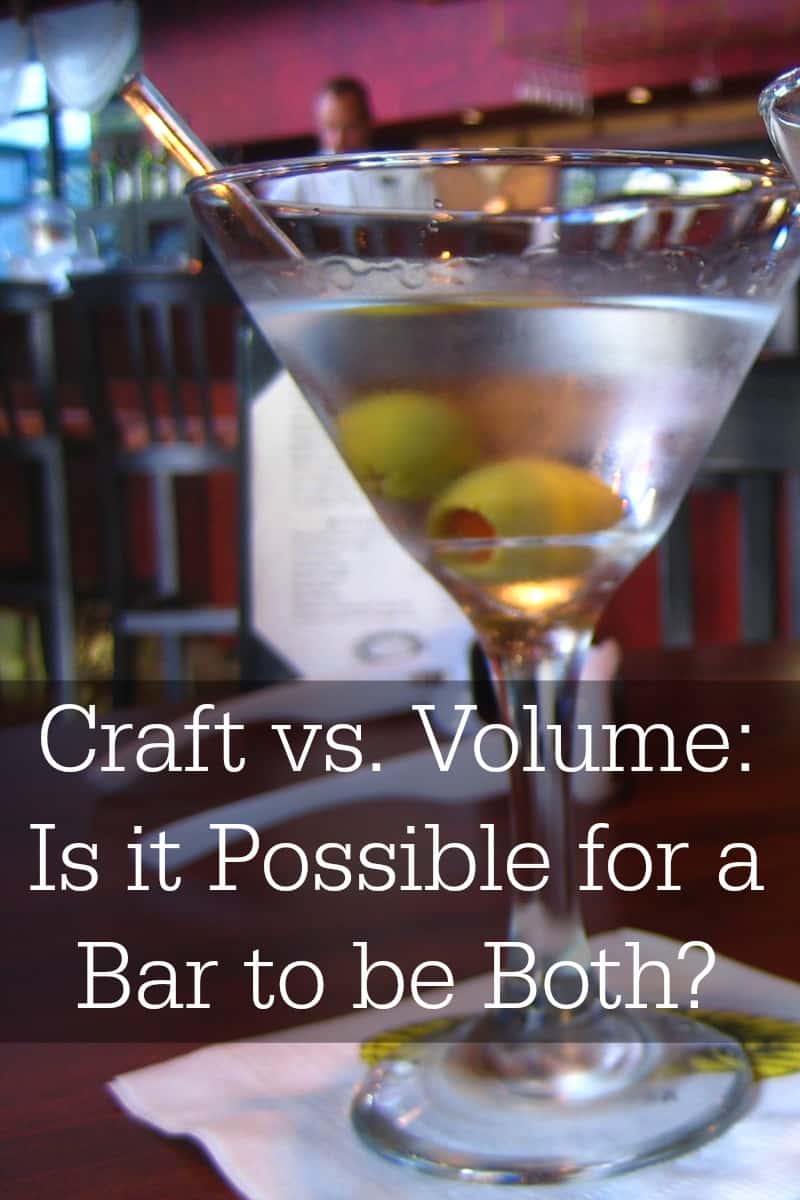Each cocktail is intricate, and requires great attention to detail. The bartender picks up a silver double-sided jigger and measures every spirit and additive to perfection—not because she is a rookie, but rather because consistency becomes a guesstimation at best without properly measuring each ingredient, and she knows this.
She moves flawlessly, as though she’s executing a perfectly coordinated dance. Each motion has a purpose, whether it’s to grab a specific puree, or carefully rim a tumbler glass for the smoky, mescal-infused margarita she’s concocting.
She is quick. Her customers are happy, and her cocktails are every bit as comprehensive as the menu promises.
Craft vs. Volume: Can you really have both?
How does she do it? The bar is swarmed with customers, and each cocktail requires special treatment, so how can she maintain a swift interaction with each customer, while still executing high-speed, craft cocktails?
As they say, “the devil is in the details.”
Every craft cocktail bar and lounge, especially those that are high volume, abide by certain intra-industry rules.
1: Make each customer feel welcome and special.
This is a quick process, and includes a full-faced (and sincere) smile, followed by my personal favorite line, “I will be right with you.” This enables each customer to breathe a sigh of relief, knowing he/she has been seen and will be helped shortly. Without the establishment of this very basic technique, customers may feel aggravated and/or ignored.
2: Demonstrate your knowledge.
This means being ready and willing to answer questions about the cocktails, and explain the origin of the liquors, the combination of ingredients, etc.
My personal preference is to hand-greet each customer with a cocktail menu and say, “Let me know if you have any questions and/or are unsure of what you would like to drink.” This statement allows me to understand my patrons while simultaneously offering them a unique, personal experience by finding out what their palate preferences are.
This does not mean I as a bartender will spend a significant chunk of time with each guest. Instead, it opens the channel of communication, whereby my customers feel welcome to ask questions about the cocktails or ingredients, and can ask for alternative options and/or suggestions.
In my experience, the majority of customers are ready to order within minutes of looking at the menu, but there are always a handful of hesitant patrons who would ask for guidance.
3: Never jeopardize quality for speed.
What does this mean? It means do not ever take shortcuts to turn out cocktails quicker, because this often will—and does—sacrifice the integrity of the drink.
Every menu is like a contract; it outlines expectations for customers and recipes for bartenders. The reason customers are willing to shell out 14 plus dollars for a craft cocktail is because it is like a work of art, created especially for each individual consumer, infused with fresh ingredients with every detail preplanned in depth.
Craft and high volume bars are not mutually exclusive
They can easily coexist as one and the same. Here’s how:
- Establish open and friendly communication with patrons. Greet each customer with a menu and a smile and offer an opening dialogue such as, “Here is a list our of specialty cocktails. Please let me know if you have any questions and I will be right with you.”
- Prepare for the night prior to opening hours. The staff should come in one or two hours before the bar opens to stock up on liquor, refill purees, garnishes, glasses and other necessary tools for working. By properly preparing, the bartenders can avoid unnecessary annoyances that will slow service down, such as leaving the bar to get more liquor or to cut more garnishes.
- Have a comprehensive and organized setup whereby bartenders can work seamlessly in their workspace without it seeming forced or overwhelming. For example, place the most-used garnishes within arm’s reach, ensure specialty ingredients that are commonly used are in an easily accessible, well-organized area, and that the speed rack is filled with the most-requested liquors (not just house liquor, but also whatever liquor each cocktail on the menu calls for).
- Have a well-trained, dependable, knowledgeable staff who loves crafting cocktails, and is able to do so while simultaneously taking drink orders, greeting new customers, closing out checks and keeping the bar clean.
- Offer something unique. Craft bars are notable because great attention is paid to detail, each cocktail is fresh, interesting, delicious and made-to-order, and, above all, the experience makes the guest feel special and important.
Details such as these are invaluable to a bar that serves craft cocktails and caters to large crowds. Ultimately, it’s the staff that will make or break an establishment, so if they are well-trained, efficient, professional—and passionate—then the lounge/bar will run smoothly and inevitably create a plethora of happy, return customers.






One point I would add. Carefully consider the complexity of the cocktails on the menu relative to your busiest shifts. Give yourself a fighting chance when volume is at its peak. Keep the really high complexity drinks for specials at slower times. It might bring extra business to those periods as a happy side effect.